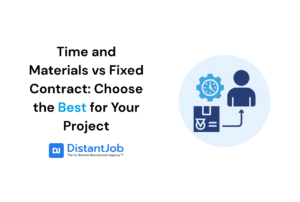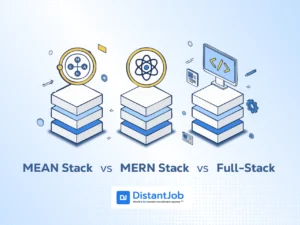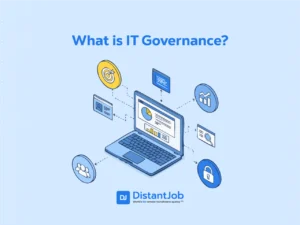Want to reduce employee onboarding time? A structured process, clear expectations, and automation can cut onboarding time in half. The faster new employees get to know the team, complete orientation, and start working on projects, the sooner they become productive.
Sometimes, it takes a month. Sometimes, just a week.
But if you add here finding potential candidates, the time to the moment a new hire will bring value can stretch to 2-3 months.
But surely it all depends on the product difficulty, employee experience, and the company’s onboarding process.
An onboarding process that is too long leads to higher costs for the company and team inefficiency as current employees spend too much time helping. An onboarding that is too short leaves a new hire unprepared, causes stress, and impacts work quality.
So how can you keep the onboarding process fast without compromising on quality? That’s what we’ll answer in this article. Discover the top six expert tips on optimizing onboarding for any type of business.
Why is Employee Onboarding Important?
The average time to productivity (the amount of time it takes for a new hire to reach standard productivity in their role) is up to 8 months. All this time, they are consuming your resources more than adding value.
That’s the exact reason some companies would like to skip onboarding altogether. Learning on the fly may sound like a good idea until you face the consequences. Employees who weren’t properly introduced to the job rarely understand what they’re supposed to do, which costs businesses $37 billion yearly!
Dedicating that month to onboarding brings much more to the table. Let’s talk numbers:
- Because of poor onboarding, you lose 1 out of 4 new hires within the first 90 days. They just quit. And you AGAIN spend resources for a new hiring-interviewing-onboarding loop.
- Btw, filling an open position costs $4,129 on average.
- Companies that provide their new team members with a clear orientation program have a 50% better employee retention rate.
But it doesn’t mean you should spend months and focus your best experts on that process. There is no need to teach a new hire everything. Provide them with a solid foundation to start. Nothing more.
And here’s the best way to do it👇
6 Tips to Reduce Employee Onboarding Time
This is a collection of the best training tips for effective onboarding process from the web, so you don’t have to google.
1. Test what your new hires already know to identify what you have to teach them
Remember the last time someone tried to teach you things you already knew? Irritating, huh? Same here. On top of that, skipping this part saves your company resources.
To really experience the powerful way onboarding helps cut down the time your new hires aren’t profitable, you need to work out an effective learning strategy. Start your onboarding process with a skills assessment. Check their knowledge of your onboarding program elements and leave only the areas where the employee scored poorly.
For example:
Onboarding process. Image source.
For this, divide your onboarding into parts and then create a list of relevant tests for each of them. For example, the support agent should know how to use live chat, how to write a well-crafted welcome message to greet a customer, how to handle their complaints, and surely, know the product.
Here is how SaaS companies sometimes test new hires:
Don’t go too hard. It should be five tests maximum with up to 15 questions each. Otherwise it will be too difficult.
Onboarding tests are a great opportunity to discover hidden talents and skills of your new team members.
2. Set clear expectations
Unfortunately, it’s common practice for companies to write a vague list of job responsibilities, not prioritizing tasks, not setting performance metrics, or setting unrealistic ones.
The result for an employee is stress, anxiety, and reduced self-confidence.
Here is a list of things to help you be more clear:
- Create a list of detailed responsibilities for an employee role. Describe how it is connected with other teams’ processes and company goals.
- Prioritize this list and specify how much time during the day or sprint should be devoted to each, for example, as a percentage.
- Set SMART goals. For example, if you’re hiring a developer, it can be something like this: “Within the first month, create a secure login system for users with proper authentication and testing.” This way, you have an easy way to measure a worker’s performance, and everyone knows what’s expected from the start.
3. Choose a list of fundamental training topics
Starting with an introduction to an industry may sound logical, but it delays the moment your employee starts bringing value. One of the best ways to optimize onboarding is to focus on more specific topics that are must-haves for the role. Let’s say knowledge of the support tech stack or client communication guidelines for a customer service agent.
Onboarding topics.
How to create such a list? Here is a short guide for you:
- Analyze the role responsibilities and daily tasks.
- Ask current team members about the basic knowledge a person should have to resolve the tasks they have daily.
- Focus on skills and topics that provide the fastest value to the company like product knowledge.
- List the tools and workflows new employees must master.
After this you’ll have a list of topics to discuss with team leaders to check if they match the goals your company sets for a new employee.
4. Build an internal knowledge base
The major problem with onboarding – the information is stored chaotically. Data about company culture is on the website, manuals on team tools are in the Trello card, and a guide on how to make a report is in a Google Document on John’s account that was deleted a year ago.
Classic.
Ideally, all the onboarding data should be stored in one place.
For this goal you can use one of the available knowledge management tools. They provide you with an opportunity to create onboarding articles, store videos, and group them. As a result, you have a well-structured library of everything your new hire needs for onboarding.
5. Iterate onboarding with a same-level mentor and self-learning
Constant presence of a mentor in employee onboarding is hard for both sides. But leaving them one to one with a knowledge base is not an option as well. There are no social learning opportunities.
Ideally, a part of the skills should be acquired by new hires on their own by reading the knowledge base, watching relevant videos on how to use the team tech stack. And another part is gained with a supervisor.
That’s called blended learning.
Thus, for example, half of the day, employees can learn the theory and the other half – practice it with a peer. This approach contributes to great onboarding experience for employees and to their efficiency. In addition, an effective learning method helps your employees progress in their career faster.
6. Implement short feedback cycles
Usually companies have a week-long feedback cycle. And it works perfectly for a supervisor to correct something if needed.
But if you want fast progress, try daily meetings. These can be one-on-one meetings with no strict time limit. Talk about the day’s plan and how they will complete it (in-details), answer their questions, provide recommendations, and set priorities.
The problem is that both of you, and especially the new employee, will soon get tired of this pressure. So use this approach for a month maximum and only for urgent positions.
Conclusion
Effective onboarding is achieved through a few techniques: focus on role-specific skills, set clear expectations, and provide well-structured educational resources. To accomplish this, you can use proven tools and tactics like a knowledge base, short-cycle feedback, or a blended onboarding approach.
The main thing is to remember that onboarding isn’t just training. Start small but focused, iterate tactics, and watch your new employees thrive from day one. If you need help hiring and onboarding a new developer on your team, book a call now to learn how DistantJob can be your strategic partner in building a dynamic, globally competitive workforce.
Frequently Asked Questions
Here are the most popular tactics human resource management implements:
Automate administrative tasks,
Offer new hires pre-boarding materials,
Assign peer mentors for their guidance.
Faster value from a new team member,
Better team productivity and efficiency,
New employees are satisfied with their job
It is a perfect combination of self-learning with some content and learning with a human mentor. This onboarding tactic helps new employees gain the necessary skills and also acquaints them with the product, team, and company processes.





